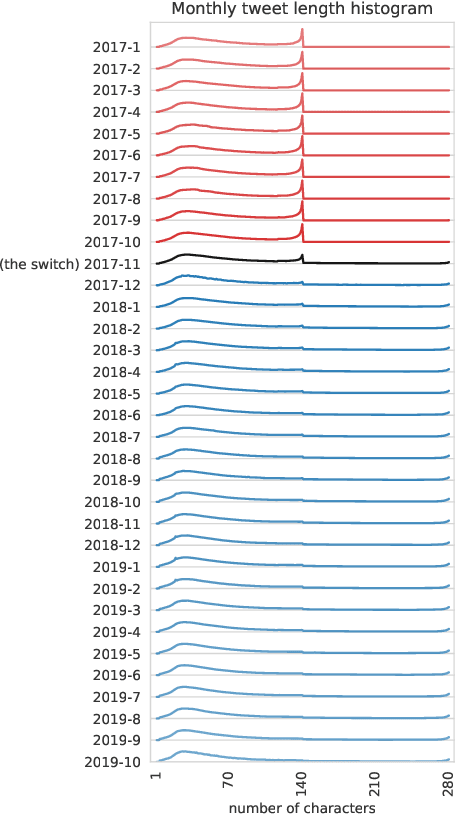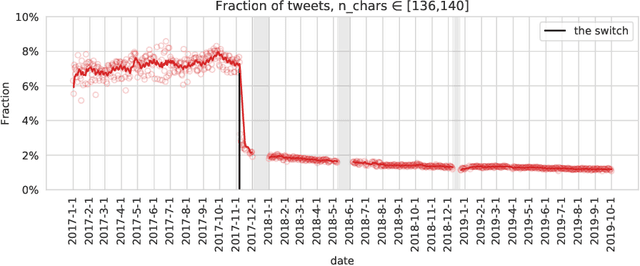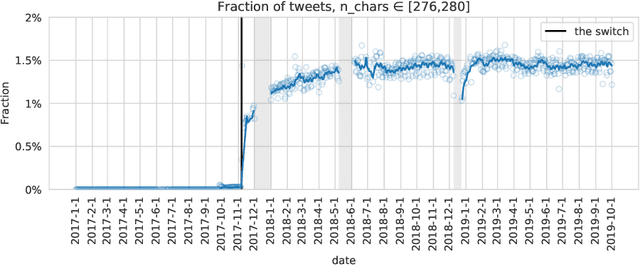Adoption of Twitter's New Length Limit: Is 280 the New 140?
Paper and Code
Sep 16, 2020



In November 2017, Twitter doubled the maximum allowed tweet length from 140 to 280 characters, a drastic switch on one of the world's most influential social media platforms. In the first long-term study of how the new length limit was adopted by Twitter users, we ask: Does the effect of the new length limit resemble that of the old one? Or did the doubling of the limit fundamentally change how Twitter is shaped by the limited length of posted content? By analyzing Twitter's publicly available 1% sample over a period of around 3 years, we find that, when the length limit was raised from 140 to 280 characters, the prevalence of tweets around 140 characters dropped immediately, while the prevalence of tweets around 280 characters rose steadily for about 6 months. Despite this rise, tweets approaching the length limit have been far less frequent after than before the switch. We find widely different adoption rates across languages and client-device types. The prevalence of tweets around 140 characters before the switch in a given language is strongly correlated with the prevalence of tweets around 280 characters after the switch in the same language, and very long tweets are vastly more popular on Web clients than on mobile clients. Moreover, tweets of around 280 characters after the switch are syntactically and semantically similar to tweets of around 140 characters before the switch, manifesting patterns of message squeezing in both cases. Taken together, these findings suggest that the new 280-character limit constitutes a new, less intrusive version of the old 140-character limit. The length limit remains an important factor that should be considered in all studies using Twitter data.
 Add to Chrome
Add to Chrome Add to Firefox
Add to Firefox Add to Edge
Add to Edge